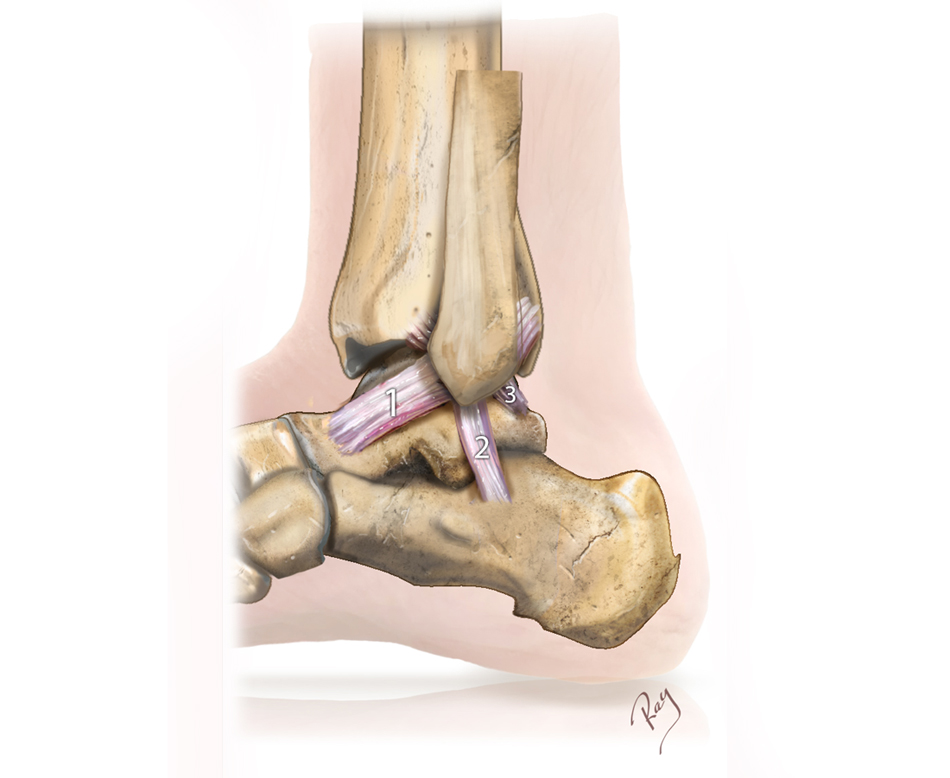When conservative treatment is not adequate to reduce sprains or when the instability is accompanied by pain, surgical treatment can be considered.
The first step is to restore tension to the affected ligaments. This intervention, first popularised by Broström and the modified by Gould, requires a section of the relaxed ligaments and their suture either directly or on the bone, to restore their usual length and tension. At the end of the surgery, the ligaments, which are often of poor quality, are strengthened using the extensor retinaculum (a fibrous band located nearby), which increases the stabilising effect.
Brostöm-Gould procedure
A: re-tensioning of ligaments. B: augmentation using the extensor retinaculum
Usually performed using open surgery, this procedure can also be performed using an arthroscopic technique. The latter technique is preferable as it allows the entire ankle to be fully explored during surgery, as well as the correction of any intra-joint problems. Moreover, the two or three 3-mm incisions limit the surgical aggression, resulting in low pain levels and facilitating the recovery. This very recent technique has produced excellent functional results and offers a very high success rate.
The open technique remains an option for revision surgery or for cases with very poor quality ligaments. In this case, it is sometimes necessary to use the tendons located nearby to reconstruct a stable ligament structure. This surgery is more invasive and has additional risks; it is therefore limited to more complex cases.
Finally, it should be noted that some extra procedures may be required during the surgery to correct any sprain triggering factors encountered that may reduce the risk of success, such as a short Achilles tendon or a non-aligned heel.





